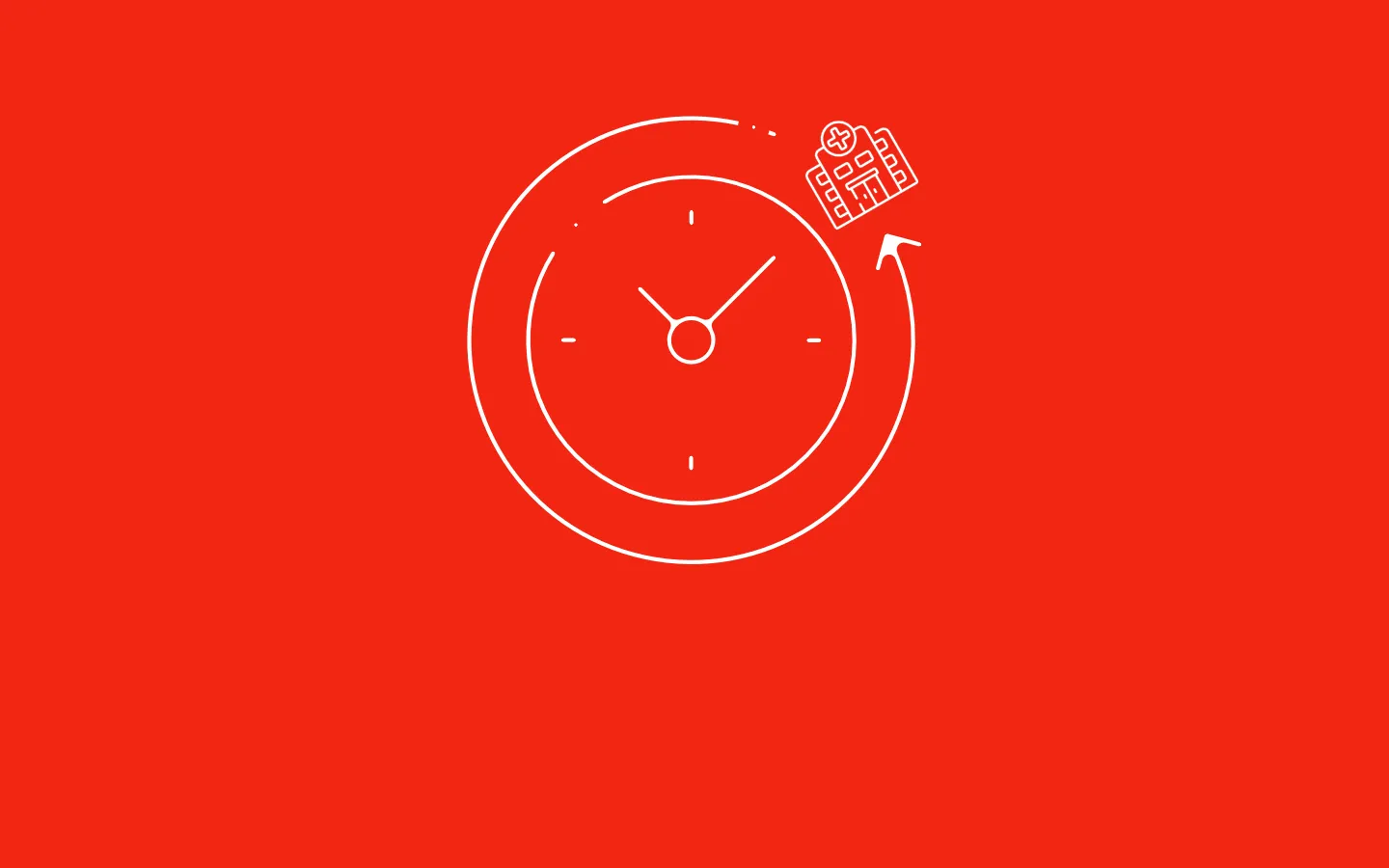It’s terrifying research.
According to recent study by deloitte, 50% of the current hospital systems will not exist in the next 10 years. Meaning, mediocre hospitals are to drop like flies in the following decade.
You see, that’s not surprising in the slightest.
When the number of choices patients face keep growing; when your staff takes refuge in functional silos instead of a collaborative ecosystem; when you face the jagged transition to value-based care; when the market dynamics changes before you adapt; when patient retention dwindles down; Or when your hospital is swimming in a sameness-sea of “me too” hospitals, it’s no surprise half of the current health systems will vanish.
So, how will you cut through these hurdles?
The answer is simple: Implement a hospital branding strategy.
What do I mean by that?
Well, this is what I’ll share with you in this article.
In this article, you’ll discover:
- What is a brand?
- What is a hospital brand strategy?
- Perks and advantages of branding your hospital
- How can a brand strategy take your hospital to a new level?
- Example of an established hospital brand
- Pivoting your hospital during this pandemic
First, what hospital brand is not?
Let’s first define what brand and branding are not so we can leave room for the truth.
A brand is not your hospital logo, it’s not visual designs or ads. It’s not marketing effort, collateral, or business graphics and it is not a product.
Some people say a “brand is a promise” there’s some truth in that, but that’s not what it is.
So, what is a hospital brand?
A hospital brand is your customer GUT FEELING about your [healthcare organization](https://www.insurancily.com/life-insurance-tips/) or care services.
By customers I mean, patients, patients' families, and visitors referring physicians, doctors' offices, blood donors, staff, and third-party payers.
It's a GUT FEELING because people are emotional, intuitive beings.
And because we make decisions according to our trust in the care service.
The gut feeling your customers has about your hospital is a direct result of the following:
- The perception they hold about your hospital in relation to your competitors
- What makes you different, RADICALLY different.
- The end-to-end experiences they have with your hospital.
- The communications they receive from your brand.
- The reputation and trust you build during a period of time; And
- The culture you create inside your organization.
Is your hospital reliable or luxurious? industry-leading or Innovative?
Or does your hospital stand for something unique? If it does, are you vocal about it?
What is a hospital brand strategy?
A hospital branding strategy is the management of the components that make your hospital unique.
Meaning, it’s about creating perceptions and fostering organization culture.
And It’s about deciding on a communication strategy, building trust, and differentiating your hospital from the lookalike brands.
Branding your hospital is about bringing clarity and painting a vivid picture for the future.
It’s like developing a vaccine against:
- Unpredictable future challenges
- Uncollaborative hospital environment
- Market clutter and cutthroat competition
- Financial pressure; And
- Unsavory reputation
Perks of having an established hospital brand
There are immeasurable advantages to having a concrete brand in place.
I’ll name a few for the sake of brevity.
I) Branding your hospital renders your competition irrelevant
Our brains are wired to notice what’s different. That’s because we need to maintain our sanity.
Would-be patients encounter between 6,000 to 10,000 ads every single day.
And for our brain to “filter out the clutter”, we skip past “look alikes” to pay attention to what’s unique.
Which means you’ll no longer need to compete on price, acquisitions, or volume.
You are at the center of the stage.
II) Branding creates cult-like loyalty to your hospital
People don’t buy what you do; they buy why you do it.
― Simon Sinek
You want loyal patients and to spark up their retention? Or Attract more of your ideal audience? State why you do what you do.
Why are you in the business? Why would anyone care?
That's why your hospital brand needs to stand for something.
Standing for a philosophy or a principle is what we value as humans.
That's because people, by nature, seek meaning.
Having a unique principle that your hospital fights for, gives it that substantial flair.
Thus attracting loyal patients that carry the same values.
If what your hospital stands for speaks to me on a deeper level, I’ll join your tribe. Not only that, I’ll convert more people to fight for your cause.
III) Branding your hospital is beneficial to an M&A transactions
Due to their large contribution to shareholder value, brands have a significant role in most M&A transactions.
And to maximize the proceeds from such transactions, buyers and sellers look at the value of the brand assets.
That’s because they want to see whether or not the brand can benefit from their position.
For example, acquirers, their goal is defined by the extent to which it can retain customers from their target firms.
The best predictor of retention ties back to customer satisfaction (which is what branding aims to do).
Whether your company is an acquirer or target firm in a potential M&A deal, having an established brand to your hospital is vital in the pursuit of growth and ROI.
IV) A brand culture skyrockets operational efficiency
Brand culture is the culture that a company cultivates in order to powerfully and consistently deliver its brand to the market. It's how people work together to bring the brand alive for customers.
—Mark Di Somma
Medical businesses routinely separate functions or hierarchical levels to achieve efficiencies, However...
These divides lead to confusion, anxiety, and distrust.
And that’s because employees work at cross-purposes, taking refuge in functional silos instead of a collaborative ecosystem.
This makes your medical staff sub-optimizing when you need all parts working together.
To combat that, having a brand culture in place creates a sense of order, making everyone vibrate at the same wavelength.
Therefore, fostering engagement with your patients, staff and increasing commitment from stakeholders.
Doing this will lead to a culture of resilience across your organization.
The Bottom line: the result of having a brand culture is coherence; the result of aimless workflow is wasted resources.
Case in point: Healthier, The risk-free hospital
Healthier, a community hospital, based in Orlando.
After collaborative work with the leadership team, we decided on a rebrand for Healthier.
Healthier is now positioned as the safest hospital for its patients.
They are laser-focus on being the risk-free choice in an age where patients dread insecure environments.
The healthier rebrand consisted of 5 Phases.
- Brand DNA
- Brand Positioning
- Brand Persona
- Communication Framework
- Art Direction
If you want to see the step-by-step process of how we develop each phase, check this guide in healthcare branding.
Their rebrand was not a mere “announcement”, they became it.
All the touchpoints, nurses, physicians, websites, receptionist, press, advertising, social media, all together—yelled safety.
If you read their blog, they solely talk about lowering medical errors, preventing patient falls, reducing readmission rates, and leading a healthier lifestyle.
In other words, they stood for a cause: safer healthcare.
If you ask patients about Healthier, the #1 thing they remember it for is how safe the hospital was.
And through the act of constant stress on leading a healthier life and being safe first, they are the safest option for their patients.
The “why” / the purpose statement they developed, acted as a decision-guide to their actions.
And by being specific and focusing on one thing, they achieved a higher goal, quality care.
They own the “safest hospital” title.
This happens when you maintain your “why”.
Not only that, You need to manage your organization’s culture day-to-day.
If you are not active on keeping clarity, discipline, and consistency in balance, then trust starts to break down.
At the simplest level, you want your medical business to be purpose-backed
Your marketing channels, staff, and the doctor giving care, all need to be on the same page.
You need everyone to be on the same page delivering a consistent patient experience
The garage guy needs to say something like “I work in the parking lot of a place that’s on this mission”.
Pivoting your hospital brand during this pandemic
Branding is more relevant than ever, as healthcare organizations must build the resilience required to serve their stakeholders in the midst of ongoing world-altering shifts, such as the COVID-19 global pandemic and its inevitable economic consequences.
A proven branding methodology is needed to bring clarity, focus and field-tested experience so organizations can continue to make progress, in good times and in bad.
What’s next?
In the past year alone, we partnered up with multiple healthcare organizations, from private practices and hospitals all the way to pharmaceutical systems.
If you’d like to build a healthcare system that is future-proof, we’re here to help you.



